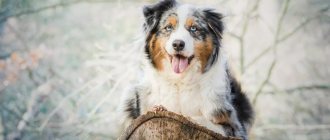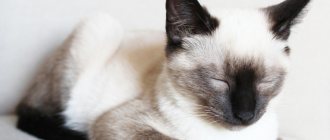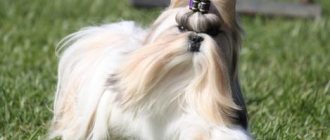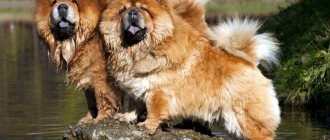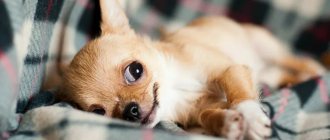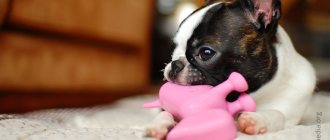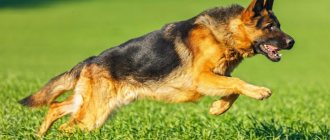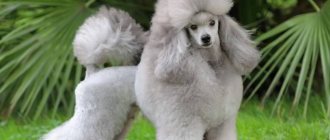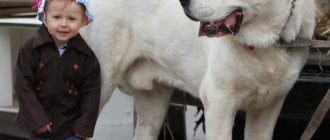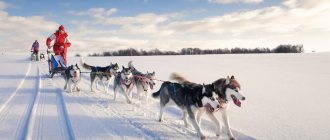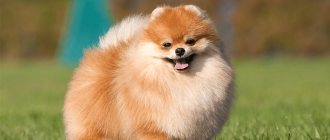The choice of a pet is often determined not only by size and physical characteristics. Human taste is multifaceted, some breeders like fluffy little dogs, others like large, muscular handsome dogs. The tops of the most beautiful animals include breeds with different parameters, guard hair length, and color. But for the owner, the most beautiful is always his favorite.
Beautiful small breeds
Sofa doggies are small apartment dogs – obviously decorative and plush. Almost all miniature animals attract the eye with their elegance and cuteness. But even with general exhibition standards, decorative babies are different: they can be fluffy or smooth-haired, squat or tall, with different shapes of ears, tails and faces.
Bichon Frize
A cloud dog, thanks to its voluminous curly coat, Bichons can be given any shape. This is a French breed, belongs to the group of lapdogs. In terms of format, Frieze approaches a square; at the withers it reaches no more than 25 cm . The characteristic standard color is snow-white. Yellowish or grayish shades are not considered a deviation from the norm.
The animals are decorative, although initially they served as rat catchers on ships and on the streets of France. They love to be the center of attention and are quite touchy and capricious. Their intelligence is well developed, so commands and tricks are easy for dogs. Bichons can often be found in circus programs and performances by street actors.
The breed requires careful care of its coat, teeth and claws. Despite its outward cuteness, any lapdog needs education and training. Otherwise, the pet will take the place of leader in the family.
Biewer Yorkshire Terrier
A breed whose origins are shrouded in mysterious stories. According to the official version, the puppy appeared by chance in the German Biewer family at the end of the 20th century. A baby with black and white fur appeared in a litter of regular Yorkshire Terriers.
Large spots are located on the chest, muzzle and paws. The beavers decided to continue the development of a new unusual breed and artificially bred several more animals with a similar color. The height of babies does not exceed 25-27 cm at the withers, they weigh up to 3 kg.
In character, Biewer Yorkies do not differ from standard ones, although some breeders believe that the new breed is softer and has completely lost the instincts of terriers and their characteristic bad habits: loud barking, digging the ground, hunting rodents and small animals.
West Highland White Terrier
Mischievous dogs, originally from Scotland, are excellent companions and loyal friends. These pets cannot be called indoor or sofa pets. Despite their modest size (up to 30 cm at the withers) , Vestikas are accustomed to the expanses of hills, green fields, and spreading mountains. The animals were bred as workers - hunters of small animals. They easily dive into rocks and pull out prey by the tail.
By nature, West Highlands are restless, cheerful, positive and always active. They need serious physical activity and good upbringing. And white double-layer wool will require serious care.
Distinctive features of terriers:
- long straight tail;
- strong, wide, squat body;
- short but strong paws;
- short muzzle with black nose and eyes;
- triangular small ears.
Shorthair
Short-haired dog breeds are the most popular nowadays, since they can be kept in any apartment, and there is almost no grooming. We will look at dog breeds with photos and descriptions below.
Dogo Argentino
The Argentine dog is considered the only breed that was developed and recognized in Argentina. This breed is distinguished by its endurance and strong character, as it was obtained through the selection of mastiffs, bulldogs and mastiffs. The main purpose of the Great Dane is hunting and protecting the home. Now it can be used as a fighting dog or a hound. The coat is white, smooth. Average weight – 45 kg.
English bulldog
Another medium-sized short-haired breed, the English Bulldog, first appeared in England in the 19th century. The dog is distinguished by restraint, ingenuity, isolation and responsibility. Previously, the English bulldog was used for fighting, now as a decorative pet. The coat is short brindle, red, and white. Average weight – 24 kg.
Chinese Crested Dog
The breed is definitely the most original, because its body is not covered with hair. From the name you can understand that the only place where hair grows is at the withers. The skin of the Crested is pinkish-gray, covered with brown spots. The crest and “mane” are snow-white. Although there is also a subspecies of the breed - Downy Crested . These dogs have long, silky hair that is parted along the ridge.
The dogs' height does not exceed 30 cm. They are graceful, lean, and dry . A distinctive feature is long thin limbs, a saber-shaped tail with a fluffy end, and thin elastic skin.
Maltese (Maltese)
This dog is known to everyone from the cartoon “Dog in Boots”, the main fashionista, coquette and favorite of the queen. But this breed was not always pampered by royal feather beds. Animals appeared on the island of Malta from the crossing of native and continental dogs that arrived on ships.
For a long time, animals were considered workers: they sailed with sailors, protecting the fleet's supplies from rodents. The Maltese bravely conquered the waves and moved to the mainland, where they were noticed by aristocrats.
Noble people immediately saw the potential in the Bolonki: snow-white long hair, miniature size (up to 25 cm at the withers), short muzzle, easy-going character . Such a pet decorated the house and its owner, but also required daily careful care.
The breed does not shed, is considered hypoallergenic, to give the coat a shine, the Maltese is combed daily and trimmed regularly.
Papillon
A kid whose intellectual abilities were appreciated. Dog handlers put the breed in 8th place in the ranking of the smartest dogs. Indeed, Papilnon perfectly remembers words and understands the owner. But due to his development, he often puts his interests above the interests of the owner. Therefore, it is difficult to cope with such mental resources. A dog needs serious exercise, not only physical, but also brain training.
The name " Papillon " literally translates as " butterfly " from French. Dogs' ears are open in different directions, stand firmly on cartilage and are covered with long, thick hair, which creates a visual similarity to the wings of a moth. At the withers, the average height of the breed is 20-28 cm.
Russian toy terrier
A very proud and graceful dog. This breed is one of the smallest in the whole world. Toys do not have long, silky fur; they are smooth-haired and lean. Although the pets are miniature, reaching only 23 cm (weighing up to 3 kg), they have a strong character.
They have the following traits: nervousness, irritability, jealousy, sometimes even aggressiveness, but these qualities are not inherent in all representatives; in general, dogs are friendly with good mental abilities. They love their owner very devotedly.
Russian Tsvetnaya lap dog
In the Soviet Union, the direction of breeding decorative dogs was not popular; fashionistas of the USSR were forced to have the most elegant among large service dogs. But in the mid -50s, a new decorative breed was bred near St. Petersburg: a cross between the existing French Lapdog and small dark dogs imported after the end of World War II.
They turned out to be funny little dogs with long black and brown hair. But until now, Russian colored lapdogs have not been recognized by the world cynological organization.
These dogs have short legs, a long neck and a square body. Their fur is parted, falls over the eyes, and grows as they grow older. The undercoat is fluffy and thick, the guard hair is wavy and silky, always colored.
Shih Tzu
The height of these dogs is 27 cm at the withers. They are very elegant and graceful, have self-esteem, proud and calm. The breed appeared before our era on the territory of the modern Tibetan mountains. The breed was engaged in the protection of monastic cells. The puppy was later presented to the Chinese imperial family. Since then, Shih Tzus have become the property of the emperor. The common people were prohibited from breeding and keeping puppies until China opened its borders.
The name translates as “chrysanthemum”. This is due to the unusual growth of hair around the nose of animals, the hair is arranged like the petals of a flower.
Japanese Chin
Another Asian breed, which with its entire appearance confirms its imperial roots . Chins, like Pekingese, like Shih Tzu, served in the palaces of imperial families. They played with children and calmed royals. So the dogs got used to luxurious quarters, soft blankets, universal love and attention.
Their distinctive feature is long limbs and a small chest. Their standard color is black and white. Dogs with a short upturned muzzle, a bushy “fountain” tail and a luxurious thick and fluffy mane.
Types by location of spots
The appearance and location of the marks on the dog’s body differ in intensity and size. They can cover almost the entire body of the animal or concentrate in certain areas. Dogs with spots on their coats come in most breeds. Based on the location of the spots, they are distinguished:
- Irish spot with white markings of varying sizes that cover most of the animal's body.
- Piebald, in which there are large white areas on the head, neck, chest, tail and paws against a dark background.
- Extreme spotting with a small amount of primary color pigment. Sometimes the pet appears white with small colored areas.
- Speckling, when many small spots are visible on a white or light gray tone, the color of which depends on the main color of the dog.
- Marble with black spots of irregular geometry and different sizes on a white base.
Some breeds begin to develop a spotted pattern as they age. For example, the fur of Dalmatians only after two months of life becomes similar to the standard exterior that is familiar to people. Sometimes the appearance of spotting is associated with deviations from the characteristics of the breed.
Beautiful medium-sized breeds
When a family needs a faithful protector, a good nanny for a child, but there is no opportunity to have a large breed, medium-sized tailed animals ( up to 60 cm at the withers ) are suitable. Such animals are still cute due to their small stature, but are no longer so defenseless. See photos and descriptions of these beautiful animals:
Australian Shepherd (Aussie)
One of the most popular herding breeds. Due to their small stature and variegated color, shepherd dogs easily hide among a flock of sheep. They easily cope with a huge number of heads, guide them and protect them from external dangers.
The unusual appearance of the breed is due to its color: merle, blue merle, red tricolor, black tricolor. A light iris is not considered a defect for the breed. Shepherd dogs have a two-layer coat. The guard hair is fluffy, thick, with feathering on the chest, tail, and back of the thigh.
Appenzeller Mountain Dog
The smallest dog among the group of Swiss cattle mountain dogs. This is a typical Mountain Dog with an elongated body, short but soft black coat with spots of brown and white. The name comes from the Swiss name for shepherds "Senne".
The animals have lively facial expressions and a kind, playful disposition. Height at withers – 58 cm . They are designed to work side-by-side with a person. Even a child can be trusted with such a dog.
Cocker Spaniel
A group of hunting dogs designed for catching water game or hares. Their peculiarity is curly, wavy hair, elongated on the ears and hips. The animals first appeared in Great Britain and later spread throughout the world. In some countries, new branches of the breed were created.
American Cocker Spaniel
These are some of the sweetest Spaniels and are intended for showing rather than hunting. Dogs have long, thick fur, with seals and waves at the ends. This cover requires careful care. The maximum height is 39 cm, so the ideal place to keep it is an apartment or house.
English Spaniel
Energetic, strong, well-built dogs. Typical spaniels with their perfect hunting skills. English Cockers have a good sense of smell and eyesight. But the standard is so strict that many representatives often do not fit into the framework and remain at the pet class level.
One way or another, the animals remain beautiful and confident. Their height is 38-39 cm, the coat is hard, wavy, and of medium length. Colors: black, black-blue, red.
Russian hunting (cocker) spaniel
This domestic gun dog is the only one of its kind, but even it is not recognized by the world canine organization, which does not make it less popular. These spaniels are smaller than others in size, up to 45 cm at the withers, but this does not affect their working skills. The breed is used for hunting white hares and game birds. The dogs' cuteness is ensured by their wavy soft fur and trusting large eyes.
Irish Soft Coated Wheaten Terrier
Multifunctional dog, assistant to Irish farmers. Since ancient times, he has been helping people with grazing livestock, protecting pastures and barns from rodents, and protecting property. Externally, the dog is not large (up to 46 cm), but strong.
Elongated body. The neck and limbs are long, the hind legs extend beyond the line of the croup, which ensures sweeping and graceful movements. Dogs have medium-length fur with a wavy texture. The color of Terriers is any shade of wheaten.
Collie - Scottish Sheepdog
One of the Collie breed branches is the Scottish shepherds, who have long ceased to fulfill their direct duties. Animals gained popularity after the film “Lassie,” where the devoted Collie became the main character. Long-haired dogs have a thick coat of red color with white and dark spots. Shorthairs are predominantly dark.
Another difference is the sharp muzzle and narrow eyes. This makes dogs look like foxes. At the withers, the dogs reach 56 cm. The Collie's body is elongated, with a convex croup and noticeable withers. Due to their long hair and short limbs, dogs appear stocky.
Portuguese water dog
The unusual nature of the breed is due not only to its appearance, but also to its functions. Can Diagua were bred along the entire coast of Portugal, they drove large fish into nets, looked for fragments of fishing gear, and transmitted messages from ship to ship. It is to perform the work of a fisherman that dogs are given a water-repellent thick coat of a curly type.
The maximum height of dogs is 57 cm . They can be light (white, beige) or dark (black, brown), large spots are allowed. By nature, the animals are balanced, calm, loyal and friendly.
Samoyed dog
Fluffy and cute Samoyed huskies are born for the north and work as a sled dog. They have long white fur and dark eyes and nose. It seems as if these dogs are always on springs, their optimistic attitude infects their owners.
Although the animals are medium in size (53-60 cm), they live better outside the apartment and in a temperate climate. Hot summer and Samoyeds are incompatible. In addition, these pets shed heavily all year round.
Color groups
Experts divided all the variety of colors into several main groups. They include both single-color and multi-color variations of shades and patterns.
Solid
The solid color of tetrapods is distinguished by the presence of only one shade on their body. On the other hand, it may be its complete absence. The substance eumelanin forms black or chocolate pigmentation with varying degrees of saturation. The lightened form of this type is called blue or beige.
The substance pheomelanin is responsible for the red or deer variant. And the lightened form of the pigment gives a sandy background with variations from white to light cream.
Mixed
A mixed group appears by combining a pair of shades. Moreover, the white tone should not participate in the mixing. The variation in the colors of the dog is influenced by the presence of the substance eumelanin or pheomelanin. As a result of the manifestation of these two pigments, 5 types of mixed tones are distinguished:
- red with a black mask on the face;
- red with some darkening;
- brindle;
- black with reddish tan;
- red with black undertones.
All types of these variations are characterized by some lightening and a special placement of pigmented fur on the body of the four-legged friend. The mask, in turn, is combined with each of the four tones.
Modified
The mentioned groups may change with age. So, spots, bleached or piebald areas appear on the fur. However, lightened dog coat color is common in many breeds, and this is in no way due to age-related changes. It’s just that a pet is born with pigment, but over time it loses it.
This modification can be observed in combination with any base tone. For example, dark spots or variegated shades are clearly visible against gray and lightened backgrounds. This is the so-called marble tone.
White spots are formed due to a complete lack of pigmentation on certain parts of the pet’s body. There are pets that have white spots located almost all over their body, and only their ears are colored.
The most beautiful dogs of large breeds
Large breeds that were created specifically for work can be elegant and graceful, which can be seen even in the photo. Indeed, the exterior of such dogs was not treated as carefully as the appearance of decorative dogs. But even in such conditions, truly beautiful animals appeared.
English Setter
This is an unusual pointing dog . The breed is characterized by eccentric colors, for example, light to fine gray grain. The animals have long soft fur, an intelligent look and a kind disposition, so they make everyone they meet fall in love with them. The animals are larger than average, their standard height is 61-68 cm. The appearance of this breed has been improved for 50 years.
Afghan Hound (Afghan Shepherd)
Like all greyhounds, it is a fit, dry dog, with a lean belly, long thin limbs, and a pointed muzzle. The most interesting color for this breed is cream, when the skin remains black. The guard hair is long, silky, straight. Standard size is 70-74 cm at the withers.
The animals are used to hunt field rodents, although now Afghans more often perform at exhibitions than catch hares.
Weimaraner or Weimar Pointer
Large, smooth-haired, handsome dogs (up to 65 cm at the withers) with velvety gray-silver hair . The Weimaraner is called the "Silver Ghost". These dogs are classified as gundogs. Their task is to point to game birds, freezing in a characteristic pose.
The dogs were bred in the mid-19th century, although according to historical data they existed before. A little later, long-haired Cops with thick straight hair appeared. The dogs are tall, dry, lean with long, rounded ears that fit tightly to the head.
Dalmatian
Harlequin dogs are the most unusual in their color. They may be white with a brown or black spot. Animals were bred in Croatia 2-3 thousand years ago. Initially, Dalmatians performed their innate function - hunting.
The breed belongs to the group of hounds. But later their special mental abilities were noticed, helping to learn any commands and carry them out clearly. So Dalmatians became ideal circus and show dogs. Despite their visual attractiveness, such pets require serious training.
Russian greyhound
From the name you can understand what the dog looks like. Firstly, all Greyhounds have a similar constitution: an elongated body, a lean belly, a beautiful long neck and dry limbs. Their muzzle is thin, narrowed, and their chest is well dropped. The second part “canine” comes from the word “dog” - wavy long hair with a silky texture.
The animals still remain workers and have not lost their basic qualities as hunters. But their noble appearance and grace brought Russian dogs to international dog shows and competitions.
The dogs are really big. The average breed height is 75-85 cm.
Great Royal Poodle
This is the largest size variation of the Poodle breed. Maximum height is 62 cm at the withers. The dogs were created for water hunting, it was assumed that they would dive for waterfowl. But now, thanks to their eccentric appearance, the animals have become decorative. In addition to their unusual appearance, dogs have extraordinary intelligence and take second place in the ranking of the smartest.
In addition to size varieties, Poodles have different coat types: curly and corded. In addition, this breed is characterized by various colors: black, gray, apricot, white, beige, brown.
You cannot appreciate the beauty of some breeds and ignore other dogs. All animals are beautiful. According to statistics, there are more than 4,000 breeds, each with its own individual characteristics and highlights.
3.3 / 5 ( 6 votes)
Three-color variations
A tricolor dog acquires its color as a result of a mixture of tan or saddleback species combined with black or red spots. Moreover, the marks are placed in strictly defined areas of the body, and not in a chaotic manner. Among these variations are:
- Roan
, the peculiarity of which is the location between pigmented hairs of non-pigmented (that is, white). This combination creates a silvery background with some weakening.
- Marble
, or "Harlequin", with a white, blue-gray or light base. The dog has black spots with jagged edges. Sometimes the marks may have a brownish-gray tint.
- Piebald
, which is a combination of two bases. This option appears in large light or white spots. They are located on a reddish background. In some cases, the base tone has a different pigment.
The names of colors vary among different breeds. These may be traditional specific names. There are also special names for the colors of hunting animals, which have historically developed and become entrenched in the everyday life of lovers of four-legged animals.
Genetic conditioning
The appearance of the fur of tetrapods is determined by different genes. Some of them are responsible for the fusion of the substances eumelanin and pheomelanin. Other genes distribute these elements throughout the pet's coat and body.
There is a hereditary predisposition that determines the intensity of the basic tone and spottiness of the fur. The main genes responsible for the tone of the coat are genes A, C, B, D, E, G, M.
Their combination forms the color and pattern on the body of the four-legged friend. Genes are able to combine in different combinations, distributing pigment and spotting throughout the body. Experienced breeders, having seen the parents of the future puppy, are able to calculate the baby’s exterior, even if he is still in the womb.
The standards of some breeds contain strict rules on genetic conditioning. For example, in Europe there is a ban on dogs with Isabella color. This variant contains a combination of genes that subsequently provoke a whole range of diseases.
Health
Characteristic diseases
Papillons are most often susceptible to the following diseases:
- Turn of the century (entropy)
- Corneal dystrophy
- Progressive retinal atrophy
- Cataract
- Congenital deafness
Puppies under the age of 4 months may develop glycemia - a lack of sugar in the blood. Such a defect as an allergy is not observed.
To avoid the development of pathology, you need to monitor the puppy’s diet, giving preference to carbohydrates.
In addition to highly developed intelligence, Papillons have an unrivaled memory for dogs. Can remember musical notation and recite a book
Vaccinations
The first vaccination is given to the Papillon at the age of 8 weeks, the vaccination procedure is repeated after four weeks.
Next, the dog is vaccinated once a year. 10 days before vaccination, the animal is dewormed.
For ten days after vaccination, you need to carefully monitor the pet’s condition, avoid drafts, walks and contact with unvaccinated animals.
The Papillon has an amazing feature - it perfectly senses a person’s mood and skillfully adapts to it.
Varieties of face masks
Different breeds of four-legged animals differ not only in the color of their coat, but also in other features of their exterior. Thus, on the dogs’ faces you can see masks characteristic of the breeds.
They are dark - brown or gray. Masks may vary in size and extend to the chest. The marking is combined with a variety of bases: zoned, saddle, tan and brindle. And among greyhounds the mask is called “mazurina”.
Reverse masks are light areas on the dog's face. May be called domino or grizzly. The reverse mask is combined with zonal and saddle tones.
